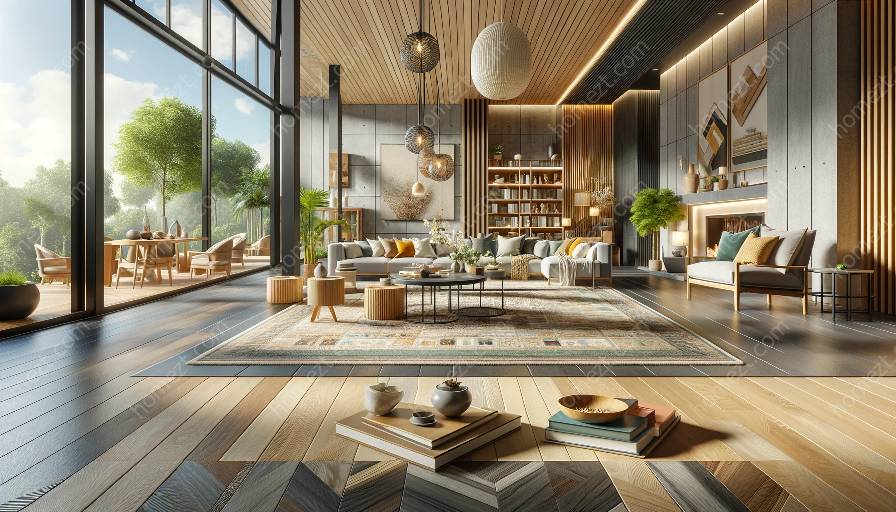Carpeting plays a significant role in shaping the acoustics of a room and contributes to the overall aesthetic appeal and functionality of interior spaces. As such, understanding how different types of carpeting affect acoustics is crucial in making informed flooring and interior design decisions.
Impact of Carpeting on Acoustics
Carpeting can influence the acoustics of a room in several ways. The type, thickness, density, and material of the carpet all contribute to how sound is absorbed, reflected, or transmitted within a space. Additionally, the installation method and underlay of the carpet can further modify the acoustic characteristics of the room.
Carpet Types and Acoustics
Various types of carpeting, such as cut pile, loop pile, and combination pile carpets, can impact room acoustics differently.
- Cut Pile Carpets: These carpets feature cut fibers that stand upright and offer a plush and soft feel. Cut pile carpets have the potential to absorb and dampen sound, making them suitable for spaces where noise reduction and improved acoustics are desired, such as bedrooms, home offices, and theaters.
- Loop Pile Carpets: With looped fibers that create a distinct pattern, loop pile carpets are known for their durability and resilience. While they may not offer as much sound absorption as cut pile carpets, they can still contribute to mitigating noise levels in moderate traffic areas.
- Combination Pile Carpets: These carpets combine both cut and loop pile fibers to achieve a balance of comfort and performance. They can provide moderate sound absorption while offering enhanced texture and design versatility.
Material Selection and Room Acoustics
The material composition of carpeting also has a significant impact on room acoustics. Different materials, such as wool, nylon, polyester, and polypropylene, offer varying acoustic properties.
- Wool: Known for its natural insulating properties, wool carpets can effectively absorb sound and reduce noise levels, making them ideal for creating quieter environments.
- Nylon: Nylon carpets are resilient and offer good sound-absorbing capabilities, making them suitable for high-traffic areas where noise control is important.
- Polyester: While polyester carpets may not provide the same level of sound absorption as wool or nylon, they offer stain resistance and a soft texture that can still contribute to a comfortable and acoustically convenient space.
- Polypropylene: This synthetic material provides budget-friendly options and can offer adequate sound absorption, especially when combined with proper underlay and installation techniques.
Flooring Options and Acoustics Integration
When considering flooring options, it's essential to integrate the acoustic properties of carpeting with the overall design and functionality of the space. In open-plan areas, combining carpeting with hard flooring materials, such as wood, tile, or laminate, can help manage sound reflections and reverberations.
Interior Design and Styling Considerations
From an interior design perspective, choosing the right type of carpeting is not only about acoustics but also about creating a cohesive and visually appealing space. The color, pattern, and texture of the carpet can enhance the aesthetic appeal of the room while potentially impacting its acoustical performance.
Furthermore, incorporating area rugs or carpet tiles allows for flexibility in design and offers opportunities to strategically address specific acoustic needs in different areas of the room.
Conclusion
Considering the influence of different types of carpeting on room acoustics is essential in making well-informed flooring and interior design decisions. By understanding the acoustic properties of different carpet types and materials, individuals can create spaces that not only look visually appealing but also contribute to comfortable and acoustically favorable environments. The integration of carpeting with flooring options and interior design considerations can lead to versatile and harmonious interior spaces that cater to both aesthetic and functional requirements.


























